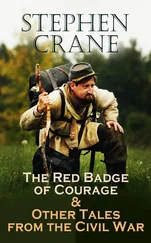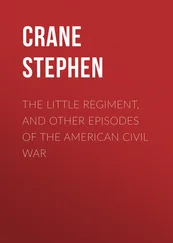Thomas Vineyard - Battles of the Civil War
Здесь есть возможность читать онлайн «Thomas Vineyard - Battles of the Civil War» — ознакомительный отрывок электронной книги совершенно бесплатно, а после прочтения отрывка купить полную версию. В некоторых случаях можно слушать аудио, скачать через торрент в формате fb2 и присутствует краткое содержание. Жанр: foreign_prose, История, foreign_edu, foreign_antique, на английском языке. Описание произведения, (предисловие) а так же отзывы посетителей доступны на портале библиотеки ЛибКат.
- Название:Battles of the Civil War
- Автор:
- Жанр:
- Год:неизвестен
- ISBN:нет данных
- Рейтинг книги:3 / 5. Голосов: 1
-
Избранное:Добавить в избранное
- Отзывы:
-
Ваша оценка:
- 60
- 1
- 2
- 3
- 4
- 5
Battles of the Civil War: краткое содержание, описание и аннотация
Предлагаем к чтению аннотацию, описание, краткое содержание или предисловие (зависит от того, что написал сам автор книги «Battles of the Civil War»). Если вы не нашли необходимую информацию о книге — напишите в комментариях, мы постараемся отыскать её.
Battles of the Civil War — читать онлайн ознакомительный отрывок
Ниже представлен текст книги, разбитый по страницам. Система сохранения места последней прочитанной страницы, позволяет с удобством читать онлайн бесплатно книгу «Battles of the Civil War», без необходимости каждый раз заново искать на чём Вы остановились. Поставьте закладку, и сможете в любой момент перейти на страницу, на которой закончили чтение.
Интервал:
Закладка:
The next day the Confederates, looking up through the drenching rain to where had stood the grim batteries and lines of blue, saw only deserted ramparts. The Federal army had retreated during the night to Harrison's Landing, where it remained until August.
President Lincoln became convinced that the operations from the James River as a base were impracticable, and orders were issued for the army to be withdrawn from the peninsula.
The net result of the Seven Days' Battles was a disappointment to the South, as the Southern public believed that McClellan should not have been allowed to reach the James River with his army intact, although the siege of Richmond had been raised.
Generals McClellan, Jackson, A. P. Hill, G. W. Smith, Joseph E. Johnston and Lee, as well as other commanding officers of this series of battles about Richmond, had been great friends. Some of them had attended school together at West Point, and many of them had enjoyed each other's fellowship while members of the Aztec Club in the City of Mexico, which was an organization of American officers, while for a few months they were in the Mexican capital at the close of the Mexican war. General Franklin Pierce was president of the club, who was afterwards President of the United States.
Generals McClellan and Joseph E. Johnston were special friends even after the war, and in a conversation with McClellan Johnston remarked "You never know what is in a man until you try to lick him."
THE BATTLE OF CEDAR MOUNTAIN
After the failure of McClellan's Peninsula campaign General John Pope was called from the West to Washington to take charge of the Union forces, and arrived in June, 1862. A new army was made up from the respective divisions of McDowell, Banks and Fremont, which was to be known as the Army of Virginia. General Pope at first refused to take command of this army, for the reason that McDowell, Banks and Fremont were superior officers in rank to himself, but was prevailed upon to take the command, which he did, and in an address to his army he ended with the statement, "My headquarters will be in the saddle." When this was shown to General Lee, he grimly commented, "Perhaps his headquarters will be where his hindquarters ought to be."
Fremont refused to serve under Pope, whom he considered his junior, and resigned. His corps was assigned to General Sigel.
Pope's idea was to draw Lee's army away from following that of McClellan down the peninsula, and advanced from Washington with Gordonsville as his objective point. This place, being at the junction of a railroad, was a base of supplies for the Southern army.
The sagacious Lee had divined his intentions and sent Stonewall Jackson and Ewell to occupy this town. Ewell arrived in advance of Jackson, and held the town. Jackson, coming up later, took full command of the army.
On July 27th, A. P. Hill also joined him with his corps, which brought their strength up to about 25,000 men.
The Union army now occupied that portion of the country around Culpeper Court House. Pope soon found that his brilliant success in the West was not like measuring swords with the Confederate generals in Virginia.
On August 6th Pope began his general advance on Gordonsville. Jackson, being informed of his advance, immediately set his army in motion for Culpeper Court House, hoping to crush the Army of Virginia before it reached the neighborhood of Gordonsville, so as to nowise interrupt their base of supplies. Jackson succeeded in crossing the Rapidan River and took a strong position two miles beyond on Cedar Mountain, which is a foothill of the Blue Ridge. From its summit could be seen vast stretches of quiet farm lands, which had borne their annual harvest since the days of the Cavaliers. Its slopes were covered with forests, which merged into waving grain fields and pasture lands, dotted here and there with rural homes. It was on these slopes that one of the most severe short battles of the war was fought.
Jackson placed Ewell's batteries on the slope about 200 feet above the valley, and General Winder took a strong position on the left.
General Pope well knew that the whole North was eagerly watching his movements, and resolved to make an attack, as he must strike somewhere, and do it soon—and here was his chance. He sent Banks, with 8,000 men, to make the attack against the Southerners in their strong position on the mountain side.
Banks advanced against the enemy on the afternoon of August 9th. He advanced through open fields in full range of the Confederate cannon, which presently opened with roar of thunder. The men, heedless of all danger, pressed on up the slope, but were suddenly met by a brigade of Ewell's division, and a brief deadly encounter took place. The Confederate lines began to waver, and no doubt would have been routed but for the timely aid of two brigades which rallied to their support. Meanwhile the Union batteries had been wheeled into position and their roar answered that of the Confederates on the hill. For three hours the battle continued with utmost fury. The fields were strewn with the dead and dying, who fell to rise no more. At length, as the shades of evening were settling over the gory field, Banks began to withdraw his troops, but left 2,000 of his brave men—one-fourth of his whole army—dead or dying along the hillside. The Confederate losses were about 1,300. On account of the peculiar situation of the armies during the battle, their wounded could not be taken charge of, who suffered terribly from thirst and lack of attention as the sultry day gave way to a close, oppressive night. For two days the armies faced each other across the valley, then quietly withdrew.
Pope's first battle, as leader of the Army of Virginia, had resulted in neither victory nor defeat. This battle was a prelude to a far more disastrous battle to be fought a few days later at Bull Run.
SECOND BATTLE OF BULL RUN
The three weeks intervening between the battles of Cedar Mountain and Second Bull Run were spent in heavy skirmishing and getting position for a decisive battle. General Pope's headquarters was at Culpeper Court House, but he had left much of his personal baggage and private papers at Catlett's Station, on the Orange and Alexandria railroad, while his vast store of supplies was at Manassas Junction.
Pope was expecting to be reënforced by McClellan, but they had not yet arrived. Meanwhile Lee had sent Longstreet with his corps to reënforce Jackson, and followed up later himself. Longstreet reached Gordonsville on the 13th day of August.
Lee observed that Pope's position was weak at Culpeper and determined to attack him without delay and gave orders for his army to cross the Rapidan. Pope knew that his position at Culpeper was weak and fell back to a stronger position behind the Rappahannock.
Lee hoped to attack the Army of Virginia before it could be reënforced by McClellan, but, on account of heavy rains, which raised the streams, he was somewhat delayed until Pope had been reënforced by a part of Burnside's corps, under General Reno, and later was also reënforced by Generals Kearny and Reynolds with their divisions of the Army of the Potomac.
Lee sent the dauntless cavalry leader J. E. B. Stuart to make a raid around the Union army. Stuart crossed the Rappahannock with 1,500 mounted men, as bold as himself. After riding all day, and on the night of the 22d, in the midst of a torrential rainstorm, while the darkness was so intense that every man was guided by the tread of his brother horseman, Stuart fell upon the Federals at Catlett's Station, capturing 200 prisoners and scattering the remaining troops in the darkness. He seized Pope's dispatch-book, with his plans and private papers, took several hundred horses and destroyed a large number of wagons loaded with supplies. Among his trophies was a fine uniform cloak and hat, which were the personal belongings of General Pope. These were exchanged later for General Stuart's plumed hat, which he had left behind when surprised by a party of Federals.
Читать дальшеИнтервал:
Закладка:
Похожие книги на «Battles of the Civil War»
Представляем Вашему вниманию похожие книги на «Battles of the Civil War» списком для выбора. Мы отобрали схожую по названию и смыслу литературу в надежде предоставить читателям больше вариантов отыскать новые, интересные, ещё непрочитанные произведения.
Обсуждение, отзывы о книге «Battles of the Civil War» и просто собственные мнения читателей. Оставьте ваши комментарии, напишите, что Вы думаете о произведении, его смысле или главных героях. Укажите что конкретно понравилось, а что нет, и почему Вы так считаете.












